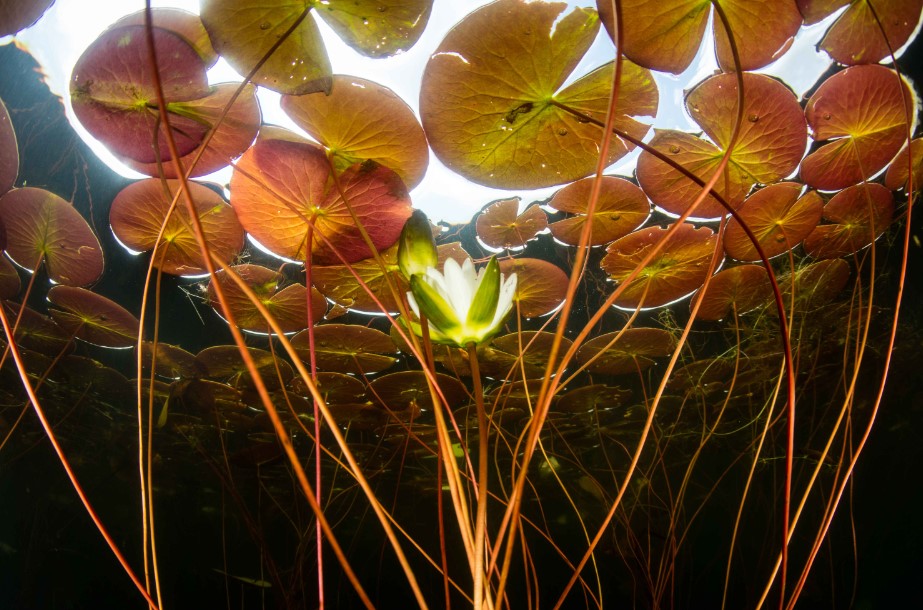Lily pads are beautiful aquatic plants that adorn the surfaces of ponds, lakes, and marshes. While their stunning flowers often steal the limelight, the roots of these underwater wonders are equally fascinating. In this article, we delve deep into lily pad roots, exploring their structure, functions, adaptations, and significance in the ecosystem. Join us as we unravel the hidden secrets beneath the water’s surface!
The Anatomy
Lily pad roots exhibit a unique structure that allows them to thrive in aquatic environments. They comprise a network of delicate, hair-like facilities known as root hairs. These root hairs absorb water and nutrients from the surrounding water, facilitating the plant’s growth and survival.
Functions of Lily Pad Roots
Nutrient Absorption
The roots play a crucial role in absorbing essential nutrients from the water. These nutrients include nitrogen, phosphorus, and potassium, which are necessary for the plant’s growth and development. The root hairs have a large surface area, enabling efficient nutrient absorption.
Water Uptake
One of the primary functions of lily pad roots is to absorb water from the aquatic environment. The root hairs have a unique adaptation that allows them to extract water efficiently, ensuring the plant remains hydrated. This adaptation is critical in environments with varying water levels.

Adaptations for Aquatic Life
Lily pad roots have evolved remarkable adaptations to thrive in their aquatic habitats. These adaptations enable the plants to overcome challenges associated with growing in water.
Aerenchyma Tissue
Aerenchyma is a spongy tissue found in the roots that helps control buoyancy and efficient gas exchange. It contains air-filled spaces that allow oxygen to reach the submerged roots. This adaptation enables the plant to respire despite being submerged in water.
Rhizomes
Some lily pad species have rhizomes and horizontal underground stems, allowing vegetative propagation. Rhizomes play a vital role in the plant’s survival and expansion by producing new shoots and roots. They help lily pads colonize new areas and ensure their continued growth.
Ecological Significance
Lily pad roots contribute significantly to the overall health of aquatic ecosystems. Here are a few vital ecological roles they play:
Habitat and Shelter
The intricate root systems of lily pads provide habitat and shelter for various aquatic organisms, including fish, amphibians, insects, and microorganisms. These organisms find refuge amidst the roots, ensuring their safety from predators and providing a conducive environment for reproduction.
Water Quality Maintenance
Lily pad roots play a crucial role in maintaining water quality by absorbing excess nutrients, such as nitrogen and phosphorus, from the water. Doing so helps prevent eutrophication, a process in which excessive nutrients lead to algal blooms and oxygen depletion in water bodies.

Conclusion
Lily pad roots are not just a means of support for these beautiful aquatic plants but are essential for their survival and success. The roots contribute to marine ecosystems’ overall health and balance through their intricate structure, functions, and adaptations. These roots are remarkable, from nutrient absorption to water uptake and ecological significance. The next time you admire a serene lily pad floating on the water’s surface, take a moment to appreciate the hidden world beneath, where the roots work tirelessly to sustain the beauty above. Read article about Orange Spots on Cactus and Companion Plants Turnips in Avi Hoffman Garden.
FAQ
The roots of a lily pad, also known as water lilies, are thin, hair-like structures called root hairs. These root hairs extend from the base of the lily pad and grow underwater. They serve the crucial functions of absorbing water and nutrients from the surrounding aquatic environment, supporting the growth and survival of the plant.
Lily pad roots are edible and have been consumed in certain cultures. They are known for their crisp texture and mild flavor. However, it’s important to note that not all species of lily pad roots are safe for consumption. Before consuming any wild plant or its parts, it is essential to accurately identify the species and ensure it is safe for consumption. Consulting with a local expert or foraging guide is recommended.
No, lily pads do not have roots in the ground. Unlike most terrestrial plants, lily pads are adapted to grow in aquatic environments. Their roots grow underwater and do not penetrate the soil. The root system of a lily pad consists of root hairs that extend from the base of the plant and absorb water and nutrients from the surrounding water.
Yes, water lilies do have roots. Water lilies are a type of lily pad that belong to the family Nymphaeaceae. They possess roots that grow underwater. These roots are vital in absorbing water and nutrients, anchoring the plant, and providing stability. Like other lily pads, the roots of water lilies consist of root hairs that facilitate the plant’s survival and growth in aquatic environments.







